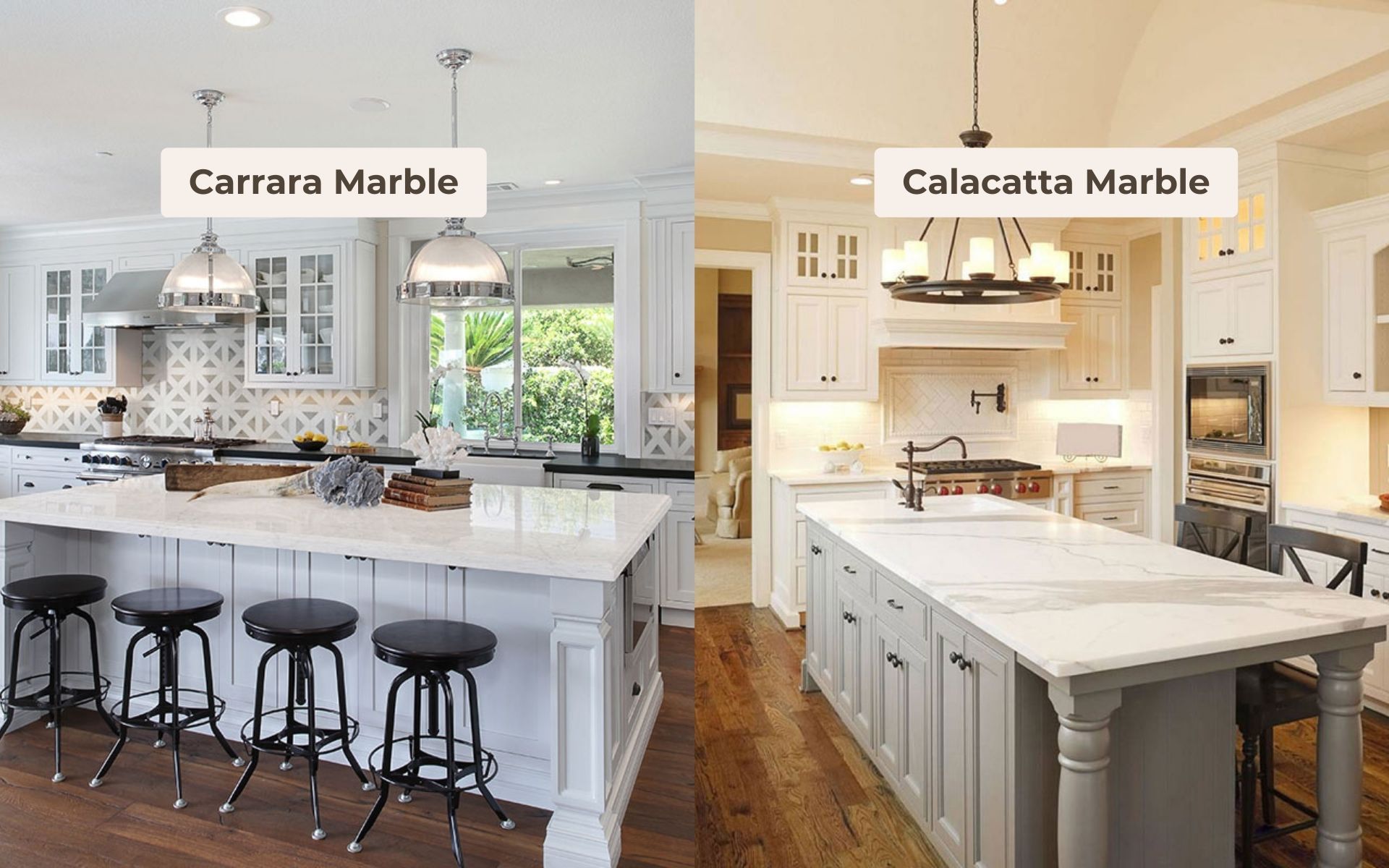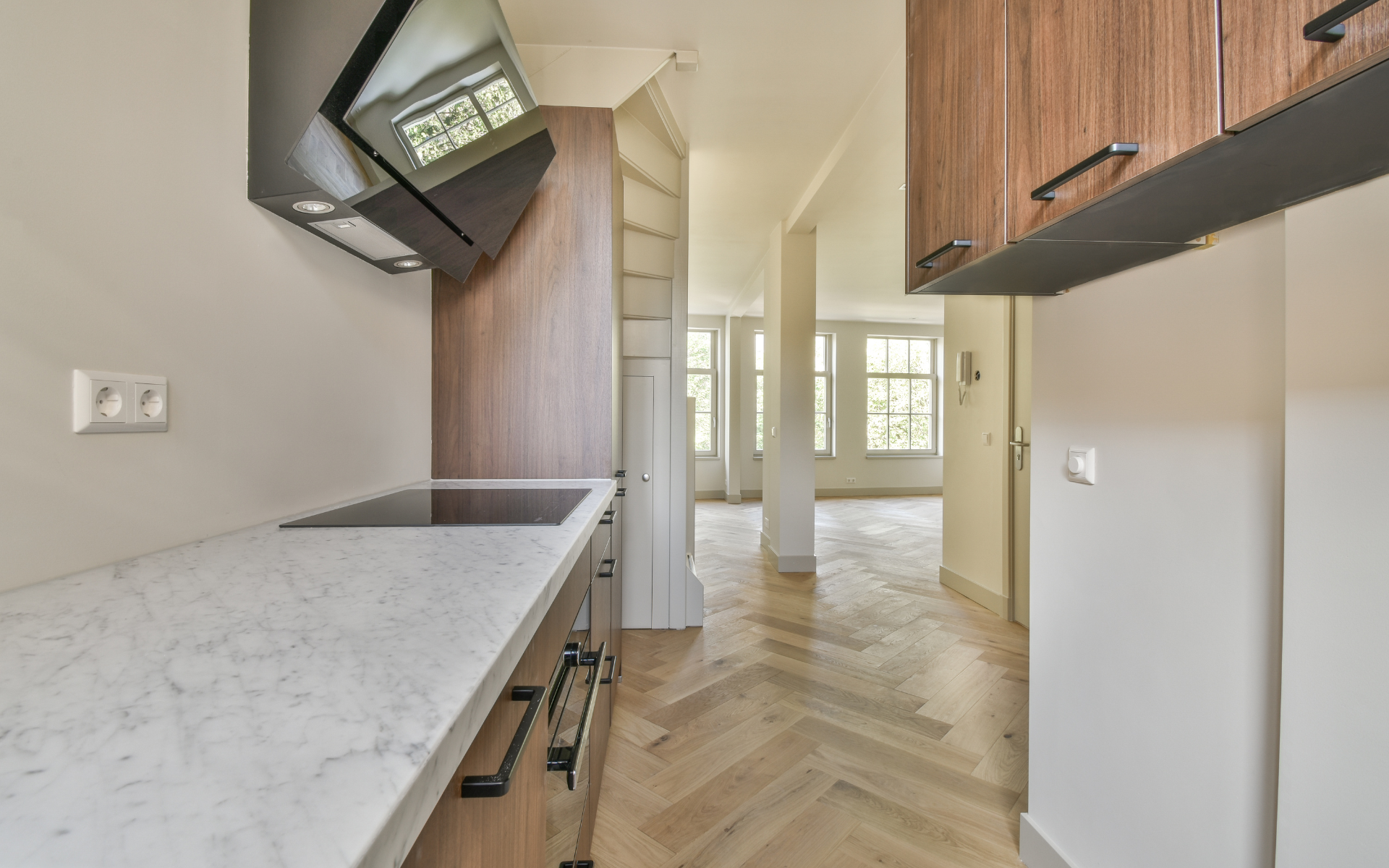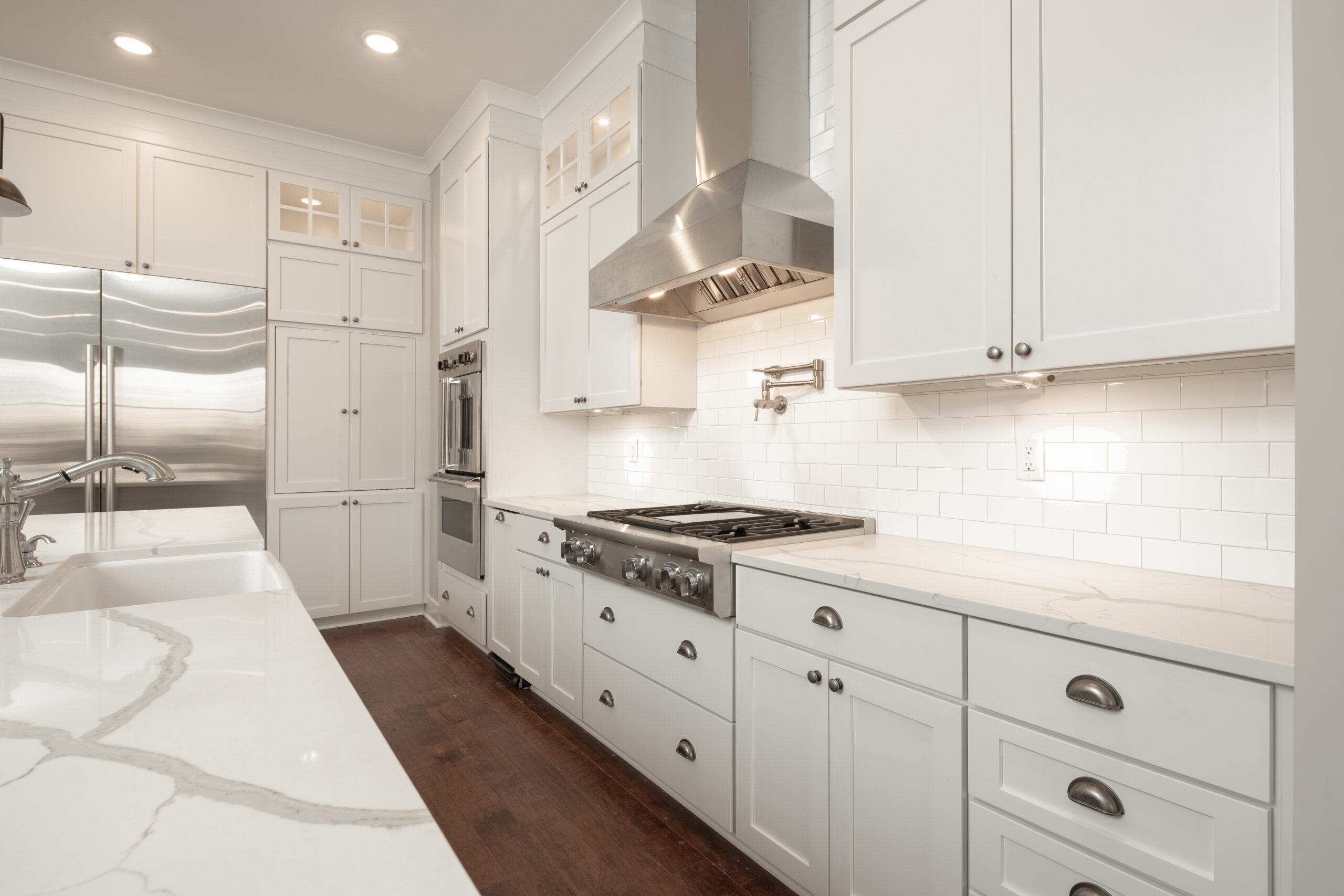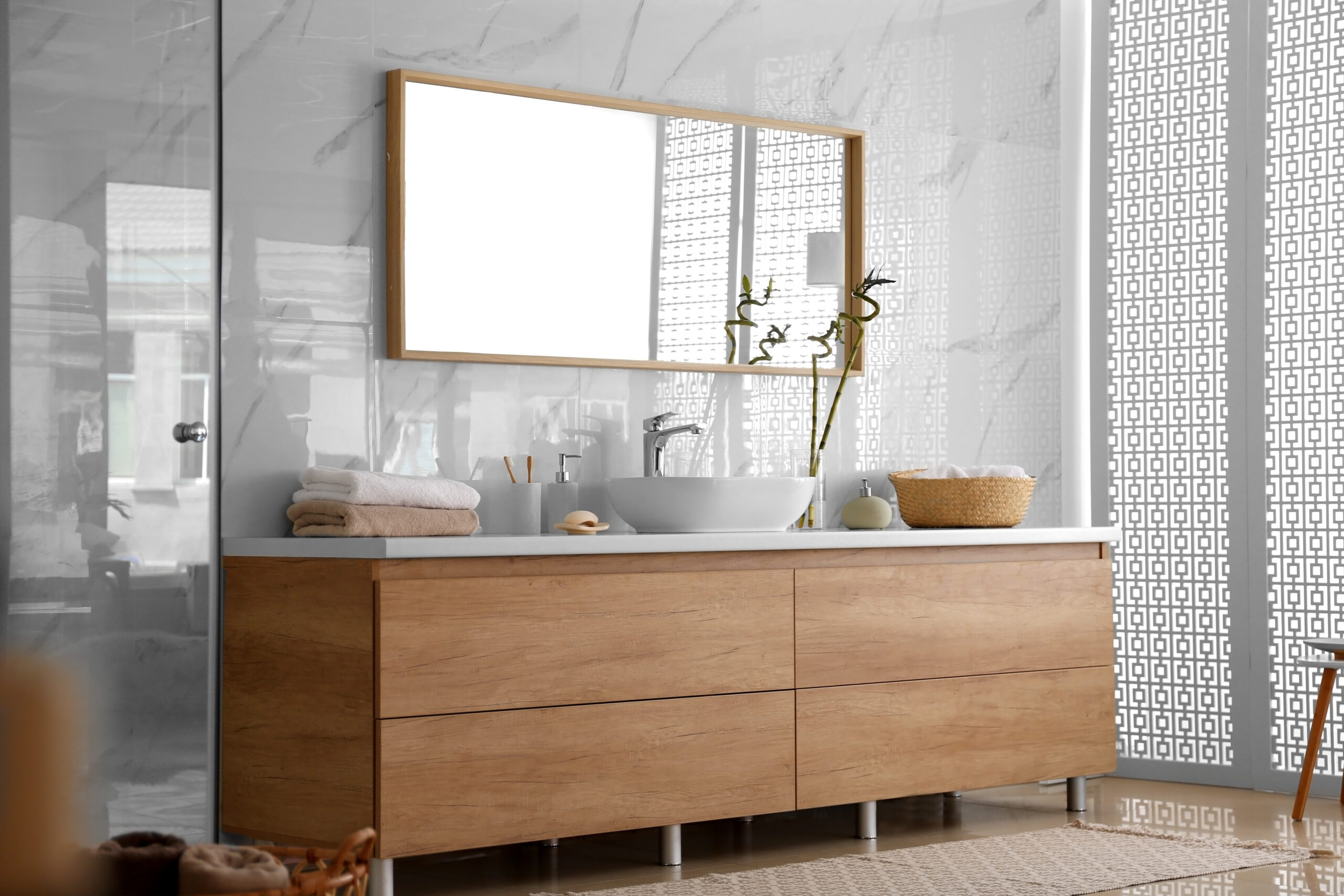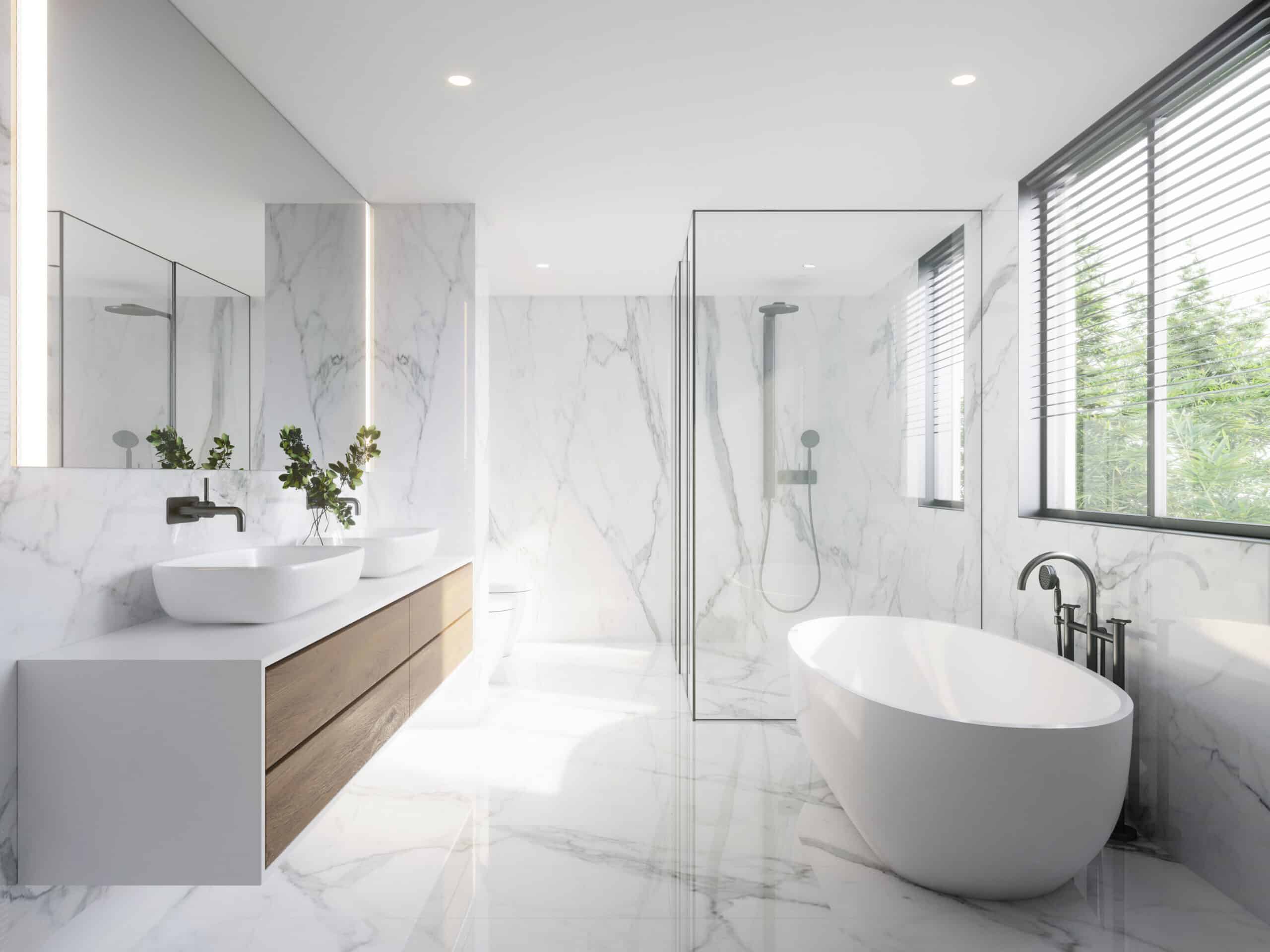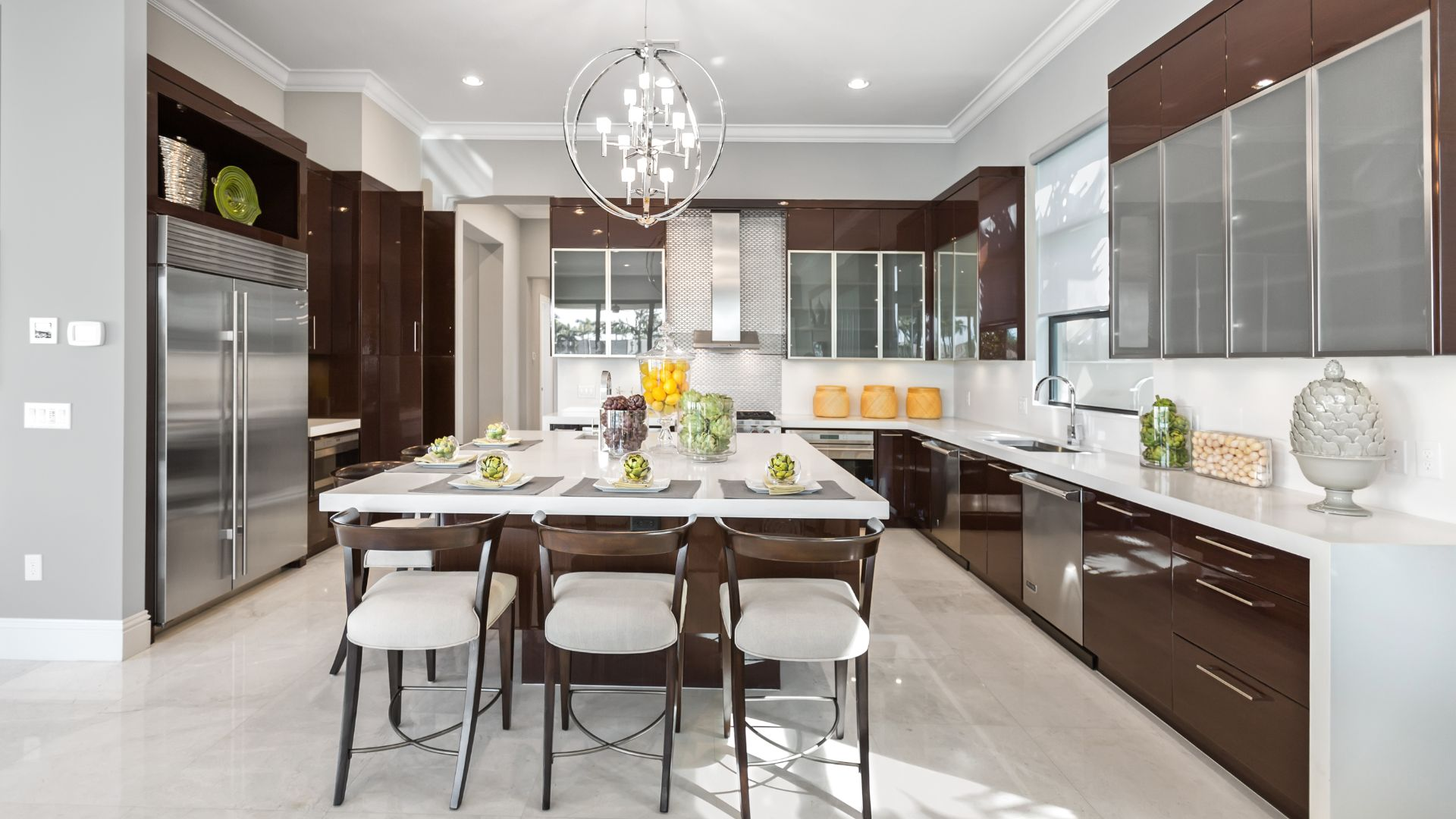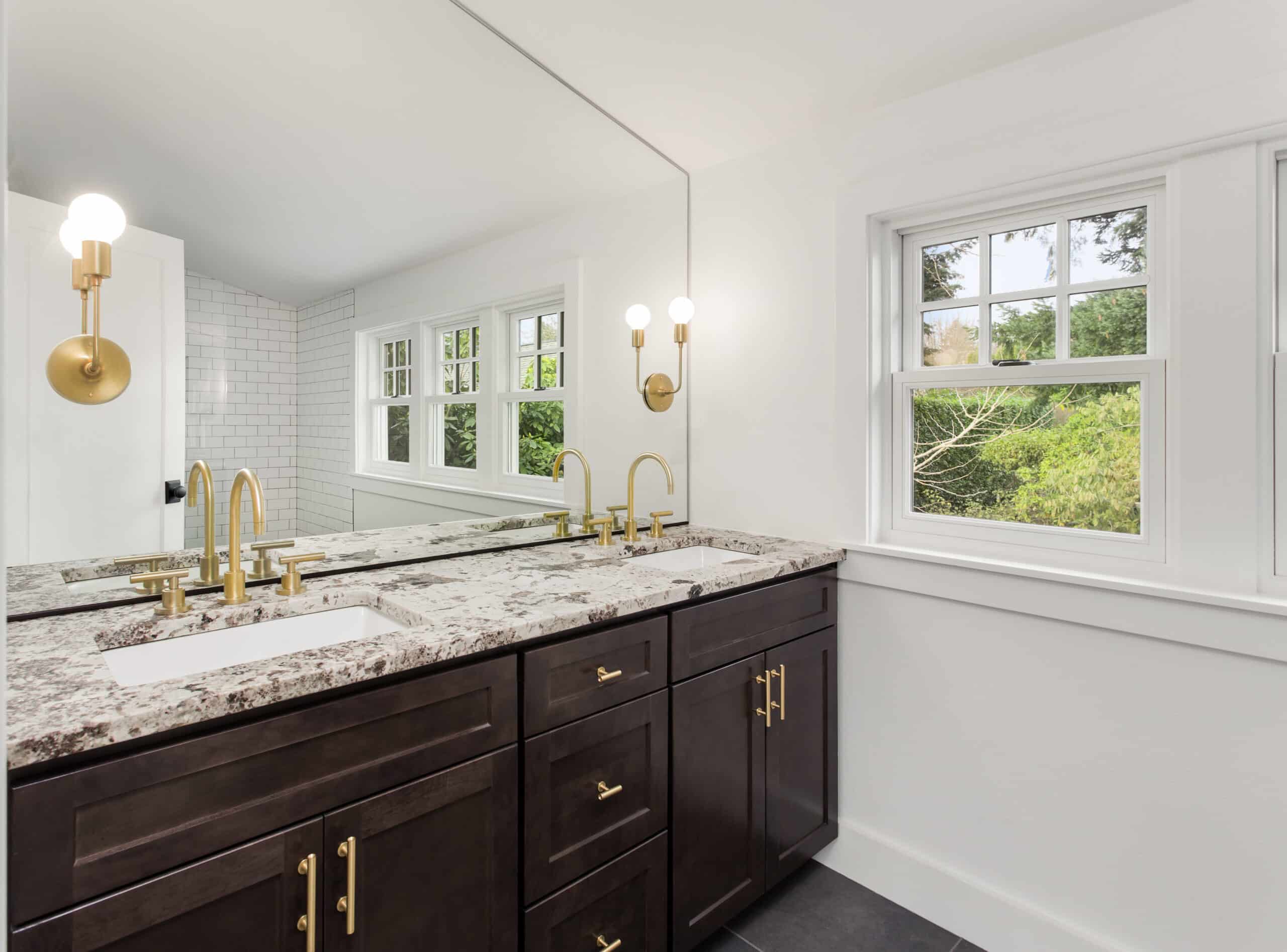Quarried from the same Tuscan region, Carrara and Calacatta maintain sought-after reputations that continue today. Though they share an origin and classic marble appeal, Carrara and Calacatta have distinct aesthetic differences and availability that impact their cost and applications.
This article provides an in-depth comparison between Carrara and Calacatta marble countertops. Key distinctions in appearance, maintenance requirements, and availability are explored. For homeowners and designers seeking to integrate the beauty of white Italian marble into residential or commercial spaces, the differences between timeless Carrara and exclusive Calacatta are essential considerations.
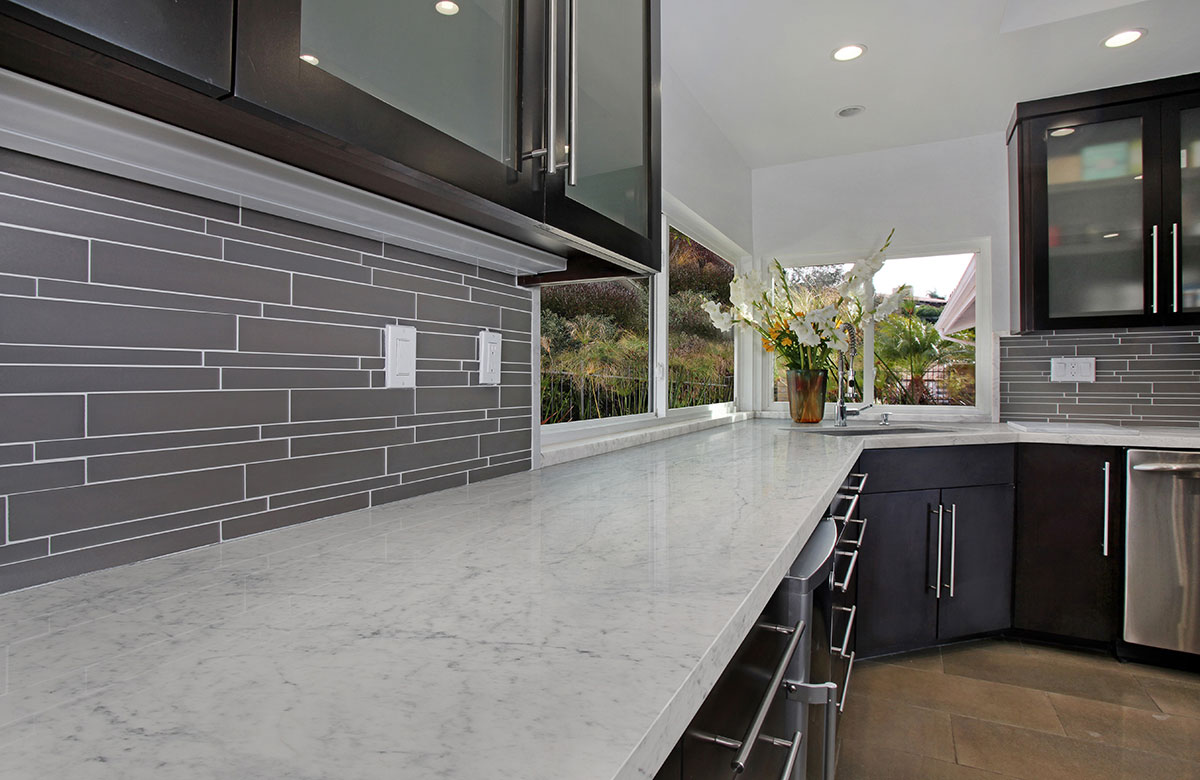
What is Carrara Marble?
This classic marble is prized for its distinctive blue-gray veining that adorns the bright white background in soft feathered patterns. The subtle veining results in an elegant and timeless aesthetic. Carrara offers a polished finish that can range from a satin sheen to a glossy shine, catering to traditional or contemporary styles.
Still today, Carrara remains the most frequently chosen marble for kitchen countertops, bathroom vanities, floors, and walls. Homeowners and designers continue to value lovely Carrara for its soft, neutral palette that feels both fresh and timeless. The affordability of Carrara compared to other luxury stones also ensures its popularity endures for kitchen and bath surfaces where strength and sophisticated beauty are desired.
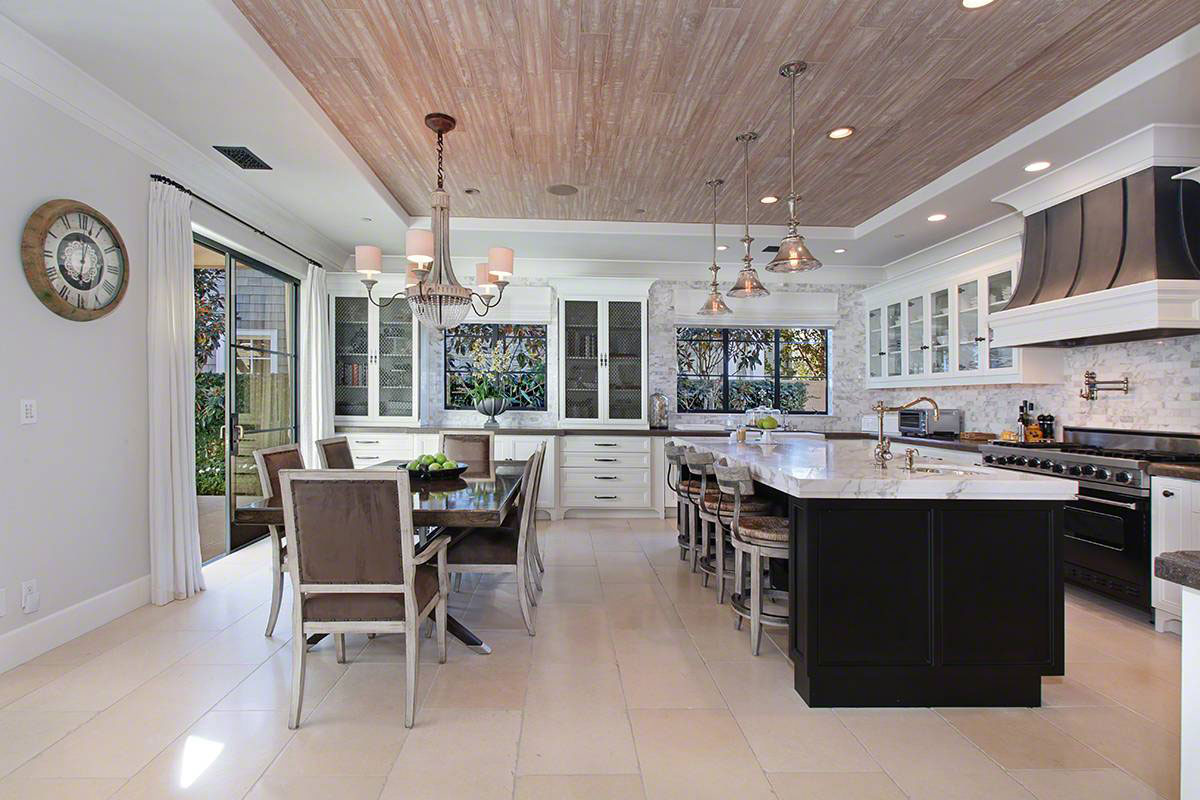
What is Calacatta Marble?
Also quarried in Italy, Calacatta marble comes from the same Apuan Alps region as Carrara marble but is far more rare. It has a distinctive white background with bold gray and gold veining that looks like fine paint strokes splashed across the exclusive stone. The dramatic veins and swirls exhibit more movement and contrast than Carrara’s subtle patterns.
Calacatta is an exclusive, precious marble with limited availability due to its rarity. Slabs exhibit unique one-of-a-kind veining that ranges from dark gray to gold within each piece. The striking aesthetic makes Calacatta one of the most sought-after marbles for high-end residential and commercial applications.
Comparison of Carrara and Calacatta Visual Characteristics
While both Italian marbles, the visual characteristics of Carrara and Calacatta have distinct differences:
Carrara Marble
Bright white background
Subtle gray veins with feathery patterns
Satin to high-gloss polish
Uniform, quiet overall appearance
Calacatta Marble
White background
Dramatic gray and gold veining
Movement and contrast in veining patterns
Unique veining in each slab
Luxurious, bold visual style
These key differences make Carrara suitable for those desiring soft, elegant marble while Calacatta provides an attention-grabbing, exclusive look.
Availability and Cost Differences
Since Carrara marble is abundant and widely available, it remains one of the most affordable natural stone options for countertops and tiles. The cost typically falls between $40-80 per square foot installed.
By contrast, Calacatta’s limited supply from small Tuscan quarries makes it far more rare. Very few marble slabs exist with the striking Calacatta aesthetics. The incredible uniqueness of Calacatta makes it one of the most expensive marble selections, ranging from $100-200 per square foot installed.
Homeowners with unlimited budgets frequently choose the prestige of rare Calacatta marble. But Carrara offers significant savings, allowing more homeowners to access the beauty of white Italian marble.
Maintenance Considerations
Since both Carrara and Calacatta come from the same region, they require similar maintenance to keep marble surfaces looking pristine. Follow these care tips for either option in your home:
Seal marble annually to prevent staining
Clean with pH-neutral gentle cleaner only
Wipe spills immediately to prevent etching
Avoid abrasive cleaners that can damage marble
Use trivets and cutting boards to protect the finish
The porous nature of natural marble requires proper sealing and cleaning methods. While Calacatta’s dramatic veining hides etching better than Carrara’s, both require maintenance to maintain the polished stone finish.
Which is Better for Kitchen Countertops?
Carrara and Calacatta can both make stunning kitchen countertops, but certain factors may sway your choice.
Carrara is an excellent choice for kitchens wanting an elegant, timeless look. The affordable cost makes it accessible for many homeowners. Just take care to diligently wipe spills and properly seal Carrara marble to keep the stone looking its best in a busy kitchen.
Calacatta brings loads of high-end drama to kitchen counters with its distinctive veining. The heavy gray and gold patterns also help hide usual signs of wear. But budget is often a barrier, as Calacatta costs a minimum of double the price of Carrara.
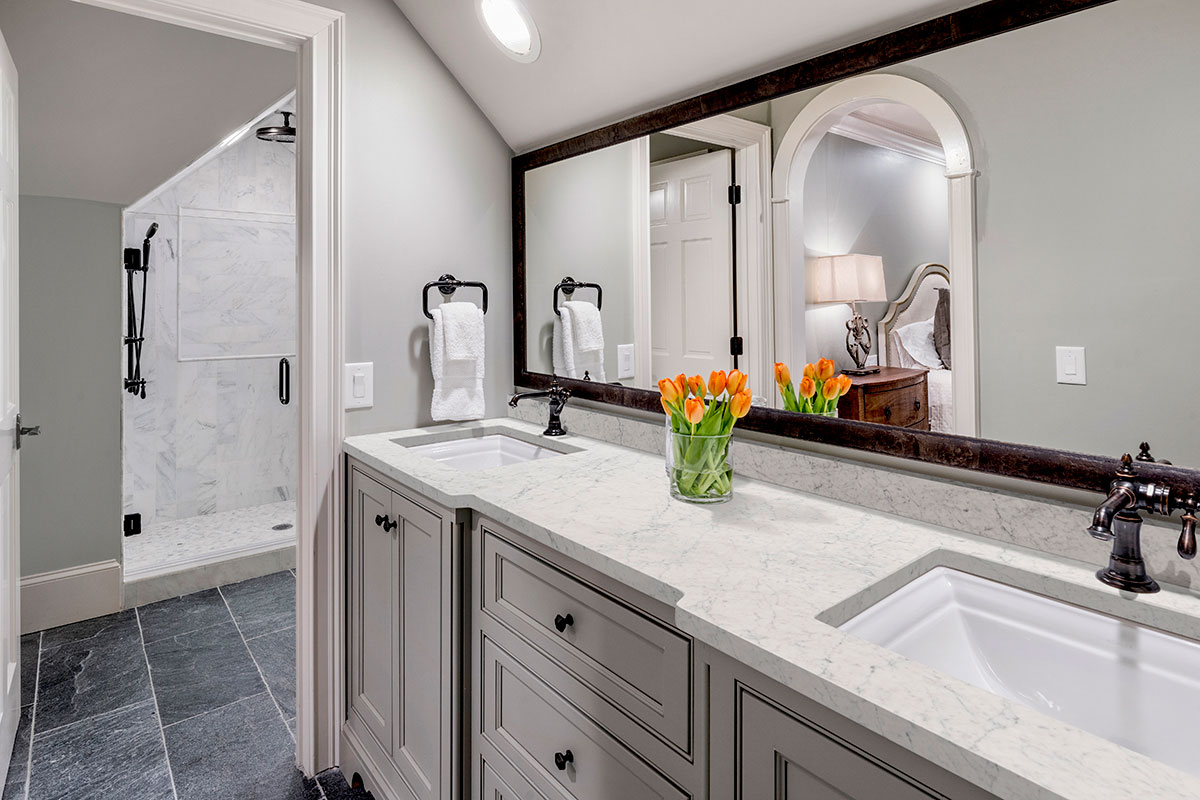
Using Carrara and Calacatta in Bathrooms
For bathroom vanities, tile, and surfaces, Carrara and Calacatta are both ideal options. Carrara is best for bathroom vanity tops, shower walls, floor tile, and decorative accents. Provides a soft, refined look well-suited for baths. Calacatta is stunning on vanities and backsplashes as a focal point. Makes a statement as an eye-catching feature wall or floor. Perfect for high-end master bathrooms.
Pros and Cons of Marble
Marble offers timeless beauty as a natural stone but has some considerations:
Pros
Elegant aesthetic
Variety of patterns and colors
Withstands heat and scratching
Easy to clean and sanitize
Long-lasting with proper care
Cons
Porous and can stain/etch without sealing
Needs repolishing over time
Can be expensive for rare types like Calacatta
Heavy material requires professional installation
Why is Marble Popular?
Marble remains an incredibly popular material for home finishes and surfaces. Its luxurious, classic aesthetic never appears dated, instead providing a timeless look with natural warmth and texture. Marble can be cut and fabricated into diverse options like tile, slabs, vanities, and decorative accents. The unique patterns and veining found in different marble types add visual interest.
Marble has been cherished since ancient Roman times for its beauty and durability, and it continues to be sought after today. Homeowners are drawn to the cool, smooth yet textured feel of marble along with its elegant appearance.
Unlike many material trends that fade, marble offers qualities that remain perennially desirable for high-end homes and commercial spaces alike. Its ability to bring sophisticated, one-of-a-kind beauty to kitchens, baths, walls, floors and more explains why marble continues to be popular after centuries of use.
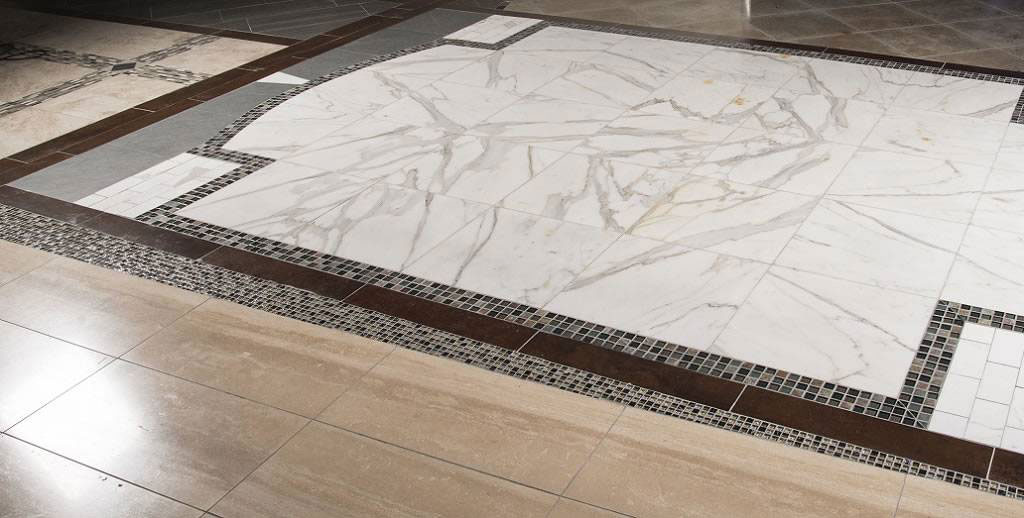
Best Uses of Marble in the Home
Marble works beautifully throughout homes, especially for:
Kitchen Countertops
Bathroom vanities and surfaces
Floor and wall tile
Fireplace surrounds
Furniture accents
Outdoor kitchens and tables
Both Carrara and Calacatta marble serve well for most applications with proper sealing and maintenance. Their elegance enhances residential and commercial spaces alike.
Final Thoughts
Carrara and Calacatta marble have distinct differences that impact aesthetics and cost. Carrara is more affordable and has a bright white background with soft gray veining. Calacatta is rare and pricier, exhibiting dramatic gray and gold veining in each unique slab. While both require sealing and care, Calacatta’s heavily veined patterns hide etching better.
For most homeowners, Carrara marble provides an elegant and accessible option for countertops and surfaces if maintained properly. However, Calacatta’s one-of-a-kind bold veining and prestige make it the choice for those desiring an exclusive, high-end look without budget constraints. When choosing between these two Italian marbles, weigh factors like appearance, maintenance, and cost to pick the best kitchen countertop or bath surface for your lifestyle and home.

